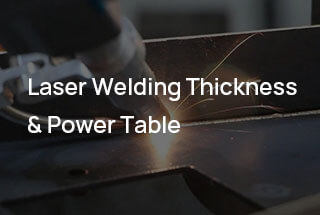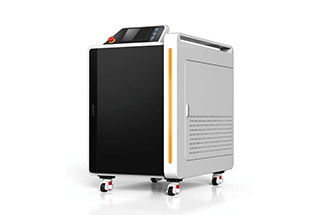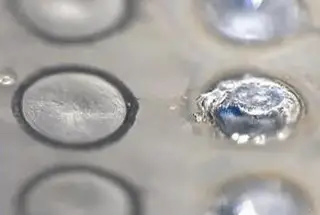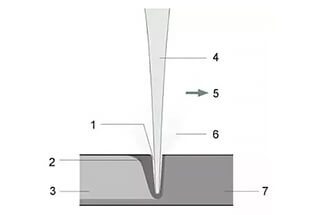
Ever wondered how cutting-edge technology is revolutionizing welding? The laser welding head is transforming manufacturing with precision and efficiency. This article explores how laser welding heads work, their advantages, and their challenges. You’ll discover why this method is becoming a game-changer in industrial production and what it means for the future of welding. Prepare to learn about the latest in welding technology and how it can benefit modern manufacturing processes.

The application of laser head technology in the manufacturing industry is a topic of research in various countries.
With a growing demand for high efficiency, environmental protection, and automation in industrial development, the use of laser head technology is quickly becoming widespread across various fields in the manufacturing industry.
With this foundation, laser welding head technology is becoming a crucial aspect of laser head application.
The laser welding head is a significant part of the application of laser head processing technology and is considered the most promising welding head technology for the 21st century.
European and American countries have already fully integrated laser welding heads into industrial production since the end of the last century.
As industrial manufacturing continues to develop, efficient, flexible, and environmentally friendly processing technologies will become increasingly favored.
The laser welding head uses a high-energy beam focusing mode, which enables deep penetration welding and fast welding, among other forms that are challenging to achieve with traditional welding processes.
Additionally, laser welding head equipment is highly flexible and features mature real-time online detection technology, which allows for the high automation of mass production.
Currently, many laser welding head production lines have been implemented in industrial production and have proven to be widely used in the processing industry.
In general, laser welding heads are capable of performing in the same applications as traditional welding heads, but with higher quality and faster processing efficiency.

Welding process using laser head technology
Laser welding head is a method of welding that utilizes the radiant energy of the laser head.
The working principle involves exciting the active medium of the laser head, such as a mixture of CO2 and other gases or a YAG yttrium aluminum garnet crystal, in a specific manner to cause it to oscillate back and forth within the resonator. This produces an excitation radiation beam.
When the beam comes into contact with the workpiece, its energy is absorbed, causing the temperature of the material to reach its melting point, thus enabling welding to take place.
Laser welding heads can be classified into two types: heat conduction welding heads and deep penetration welding heads.
Heat conduction welding heads diffuse heat into the workpiece through heat transfer, causing melting to occur only on the welding surface. The interior of the workpiece is not fully penetrated, and there is minimal vaporization. This type of welding head is mainly used for welding low-speed, thin-walled materials.
On the other hand, deep penetration welding heads not only fully melt the material, but also cause it to evaporate, resulting in a large amount of plasma. The large amount of heat produced creates a keyhole at the front end of the molten pool.
Deep penetration welding heads are currently the most commonly used laser welding head welding method, as they are capable of fully welding the workpiece with a large input energy and fast welding speed.
Due to the small focal spot produced by the laser head, the heat-affected zone during welding is significantly smaller compared to traditional welding methods. In most cases, laser welding does not require filler metal.
The welded surface should have a uniform and smooth appearance without any visible pores or cracks. This makes laser welding ideal for applications where the appearance of the weld is a critical factor. Despite the small focal spot, laser welding is characterized by high energy density of the laser beam, usually ranging from 103-108 W/cm2.
During the welding process, the metal is rapidly heated and cooled, resulting in a large temperature gradient around the molten pool. This results in a higher strength of the weld compared to the base metal, but with reduced plasticity.
To further improve the quality of the weld, bifocal or composite welding head technologies can be used.
Its unique advantages:
(1) Laser welding results in high-quality weld strength, with the ability to achieve a larger aspect ratio and faster welding speeds.
(2) Unlike traditional welding methods, laser welding does not require a vacuum environment, which allows for remote control and automation through the use of lenses and optical fibers.
(3) The laser head has a high power density, making it ideal for welding challenging materials such as titanium and quartz, and can effectively weld materials with different properties.
Of course, laser welded heads also have their disadvantages:
(1) The components of the laser head and welding head system are costly, resulting in a higher initial investment and maintenance cost compared to traditional welding methods, leading to lower economic benefits.
(2) The efficiency of laser welding head is typically low, ranging from 5% to 30%, due to the low absorption rate of solid materials by the laser head, especially after plasma is generated, as plasma absorbs the laser.
(3) The small focus of the laser welding head demands high precision of the equipment and requires strict adherence to tight tolerances to minimize deviation and machining error.
As the laser welding head becomes more widely used and commercially produced, the cost of the laser head equipment has significantly decreased.
Additionally, the advancement of high-power laser heads and the development and implementation of new composite welding techniques have helped to improve the previously low conversion efficiency of laser welding.
In the near future, it is likely that laser welding heads will gradually replace traditional welding methods, such as arc welding and resistance welding, and become the primary method of industrial welding.








